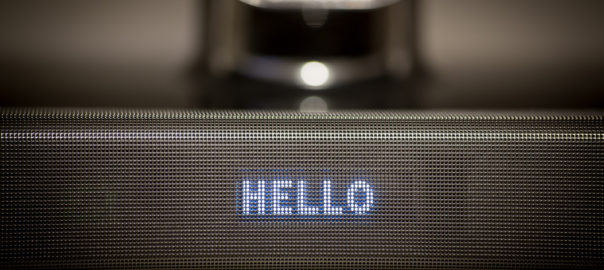Home theatre systems have come a long way in the last couple of decades, and one of the biggest improvements is sound. Years ago, if you wanted good sound to accompany your TV, a separate system was needed that included an amplifier, speakers, and tons of wiring. Today, all you need is a soundbar.
But do soundbars need an amplifier? Thankfully, most of them don’t. In this article, we explore the two main types of soundbars, which need amplifiers, and the biggest differences between them.
Active soundbars
Most soundbars are “active,” which means they don’t need an amplifier to work. They have their own amplifier, digital signal processing (DSP), source inputs, and volume control, which is everything they need to produce sound from your TV. All you need to do is plug them in and listen to them boom. This ease of setup is the main reason that they have become so popular—a regular Joe who doesn’t know much about sound systems can install them easily, and they don’t have to see (or hide) a bunch of ugly wires.
Active soundbars are also vastly cheaper than passive soundbars. You can expect to pay around $500 for a good quality active soundbar, and about $1,200 for a passive soundbar. The appeal of a passive soundbar is better audio quality and better flexibility with the system, which we talk about more below. But many modern active soundbars have good flexibility in their settings, where you can adjust the EQ levels to achieve the sound that you want. They also tend to come with pre-settings like “movies” or “sports” to make quick adjustments based on what you’re watching.
When you’re searching for a soundbar, you won’t see the word “active” advertised because the vast majority of soundbars fall under this category. Just make sure the word “passive” isn’t shown anywhere in the name or description, or whether there’s mention of a separate amplifier being required. If you’re buying from a department store like Harvey Norman, all you’ll find are active soundbars. But if you’re buying from a specialist audio store, you’ll probably find both active and passive soundbars.
Passive soundbars
A passive soundbar is a soundbar that needs a separate amplifier or receiver to work. It’s similar to a regular loudspeaker. The main reason that these soundbars exist is to provide flexibility for your home theatre setup—the external amplifier allows you to add extra speakers to the soundbar setup and then assign them as left, center, or right, creating a surround sound effect. A passive soundbar with a separate amplifier also tends to produce better audio quality, although this obviously depends on the systems being used. Some active soundbars are capable of producing excellent audio quality, and only audiophiles are likely to notice the difference.
Passive soundbar setups that include amplifiers can be complicated to set up, so you’ll probably need some experience with this sort of thing if you want to achieve a good sound. The amplifier, soundbar, and any separate speakers need to be compatible in both power output, and their physical connections. It’s best to speak to an expert if you’re unsure about this.
Passive soundbars can be a lot more expensive than active soundbars too, which can skyrocket when you add the amplifier and additional speakers. But you’ll almost certainly get better sound quality, if that’s your goal.
If you’re looking for a passive soundbar, be sure to include the word “passive” in your search, as this is the easiest way to find them.
